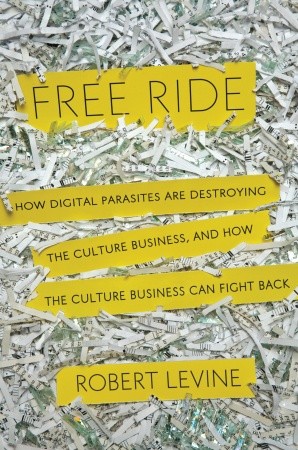Reviewed: “A Jew in the Northwest” by William Deresiewicz. The American Scholar, Winter 2012. http://theamericanscholar.org/a-jew-in-the-northwest/

Portland and Mount Hood (USGS photo by David Wieprecht)
From what I gather, the path that led William Deresiewicz to be living in Portland (OR) and writing about it for highbrow journal The American Scholar began with childhood in suburban New Jersey, then going all the way to New York City for ten+ years at Columbia, then a full hour and a half up the road to Yale for another ten+. After this lifetime within a short radius of New York, he flies out to Portland and soon finds himself inspired with masterful, prophetic commentary about “Eastern” and “Western” America, apparently based heavily on readings of prior Jewish sojourners to the West, Bernard Malamud and Leslie Fieldler.

Saul Steinberg: "New York, Center of the Universe"
Bill, I hate to tell you this, as one of those excessively polite Portlanders, but your commentary paints you as a walking cliché of the Eastern Innocent Abroad. It’s a type instantly recognizable to us literate hicks out here in the territories, upon whom literary New York periodically drops a roving correspondent to gather glib, retailable anecdotes.
You come off as filled with the leaden provincialism that lets New York types consider almost every other place a naive province, no matter how little they know about it. Haven’t you ever heard that a provincial is someone who judges wherever they are by the standards of where they came from? That’s you. A cosmopolitan, which evidently you’d like to think yourself, is someone to whom nothing human is foreign, who appreciates how people live, wherever he finds himself.
As it happens, I’ve had quite a bit of experience with New York provincials, and NE vs. NW. I was born in Portland, lived until age nine in London (dual U.S. / U.K. citizen), then in Portland through high school, then spent twenty years going between East and West Coast while in college at Yale and then living mostly in New York City while in grad school and working and traveling extensively for work; now I live in Portland again. For all those years, I’ve constantly compared places and people and experiences, and met innumerable people who’ve only lived in one part of the country, or have only superficially experienced other places.
While I love New York and other Eastern cities and appreciate their many richnesses, I’ve also come to appreciate that some of the most narrow, ethnocentric, judgmental people I’ve known are from the New York area, both the native and arriviste variety. While most people, I find, think of themselves as just living in one city among others, many New Yorkers I’ve met seem to frequently dwell on why they could never live elsewhere, why theirs is the “Capital of the World”, the paradigm of “city”, and other such totally self-absorbed and small-minded obsessions. They learn, at first jokingly, to think of America as largely “flyover country”, and so, all too easily, develop a flyover mentality in which practically everybody else can be easily written off as “red state” or “suburban” or “Western” etc. This is the noxious provincialism of the Metropolis, to which even the — or perhaps particularly the — elite-educated and cultured may succumb.

poster for Portland Jewish Film Festival, 2011
So you met an awkward fellow in the supermarket who was pleased to find a Jew? And if you one goes to New York everyone one meets is what, Mikhail Baryshnikov or Moses Maimonides? No, you might well meet, say, a lot of aggressive, car-honking, swearing, impatient people, upon whom you could, if you’re a real yokel, quickly erect a great stereotype about the locals. But that would be the kind of dumb, misunderstanding thing us moronic heartland tourists would do, right?
Thanks for the lengthy explication of the great writers in whose path you hope to tread. But really, one is left devoutly wishing you could put your literary lenses away and actually pay attention to the place you’re in. Close reading of Malamud and Fiedler (whereby Oregon and Montana are, remarkably, globbed into one West) seems to have saturated you with clichés of cow-towns, philistines, “bovine imperturbability,” ahistoricity, etc. Then, wow, you observe all the same things in Portland! Now the skeptical inquirer might ask, did Fiedler and Malamud perfectly describe and predict this, or… am I seeing them rather than seeing anew?
> Ethnicity….in the eastern cities…is confrontation…loving and hating one another,
> love-hating one another…Making their own city. Making their own America.
This reads less as observation than as tenth-generation bastardized Saul Bellow. Really, it pains me.
The absence of ethnicity you observe here is strangely lost on my friends who teach in SE Portland classrooms full of Russian, Eastern European, Mexican, Central American, and SE Asian immigrants, or those teaching in suburban classrooms full of Israeli, Indian, and Chinese children of technology professionals. There are large areas of town in which you could drop into any restaurant and probably not find a native-born American working there.
> “what…I’m missing…It’s edge. It’s energy. It’s irony. It’s curiosity”
> There isn’t anything that represents the past.

local Mercedes
Here’s a clue: if ever you observe no irony, there’s a good chance you’re just failing to detect it, and the joke’s on you. If you can’t detect the past, that’s because you’re not perceptive enough, not because there is no past. For example, a proud and prominent part of the city’s history is the vibrant 100+ year-old Jewish community of South and now Southwest Portland, which seems to have escaped your notice.
It sounds to me that what you miss is really certain mannerisms — a certain, deeply profound way that a woman on the subway looks at you and is like, so totally “meta,” for example. A certain ravenous, predatory, wounded quality among the warring ethnics, perhaps. But, of all things, couldn’t you have anticipated that mannerisms are exactly what you’d expect to be different in different places, and it could be an opportunity to outgrow or test yours? Being unable to tolerate the locals’ mannerisms says precisely nothing about them, everything about you.

Portland is filled with well-educated, literate people, and a large portion of immigrants from other places and countries, certainly not just or even particularly from the Midwest as you say. People here may have as much or more perspective as you, perhaps just offered up less presumptuously and preemptively. Perhaps the problem is, as you observed in another essay, “an elite education” [such as yours, at Columbia] “makes you incapable of talking to people who aren’t like you.” Yes, out here in Portland, many of us, to our undying shame, aren’t like you, and so in silence we labor, unblessed by your discourse.
Some of the energy and curiosity out here, which has apparently escaped your regal literary gaze, includes many of the top research and engineering labs for the world’s largest chipmaker, Intel; and the world’s largest sports and shoewear industry cluster, led by #1 company and brand worldwide, Nike. Also here are key nodes of the open-source world, including the creator of the Wiki and the creator of Linux; a thriving startup scene, and the nation’s highest recycling rates and bicycle commuting rates, and a large community of leading environmental building experts. Also, a healthy literary community, the world’s largest bookstore, and the country’s 2nd most heavily used library system. I don’t know how the locals do it, what with our bovine imperturbability and all, but it’s something you might be curious to check into while you’re passing through, if you can get past the noserings and what you see as the disturbing lack of angst among us freaks of nature.

Multnomah Village, Portland, near where I live
Anyway, It’s great that you’ve learned so deeply who you are: an “Easterner”, was that it? It’s unfortunate you haven’t, apparently, learned more about how others might see you, or see Easterners, or learned more about the city and region which finds itself patient host to your labors of self-discovery. Most of all, It’s unfortunate that you haven’t discovered the larger self that such learning might have graced you with, because then you might rise to the level of a writer capable of telling us about our time and place, rather than just so narcissistically about you.
follow me on Twitter: @mccormicktim
















